ICP Analysis Services
Get precise, reliable testing for trace elements with Element’s ICP analysis services. With cutting-edge techniques like ICP-MS, ICP-AES and ICP-OES, we offer tailored solutions for compliance, safety, and quality control, across a wide range of industries. Whether you need fast, cost-effective testing or detailed analysis, Element ensures high accuracy and timely results, backed by our expert team.

What are ICP Analysis Services at Element?
Inductively Coupled Plasma (ICP) analysis is a versatile and highly sensitive technique used to detect and quantify trace and ultra-trace elements in samples. At Element, we specialize in offering customized ICP analysis services across multiple techniques, including ICP-MS, ICP-AES, and ICP-OES. We focus on delivering accurate, reliable results for industries ranging from aerospace to life sciences, ensuring that our tests meet your specific needs.

What Can Element Offer You For ICP Analysis?
Key tests offered
Key tests offered
We deliver comprehensive elemental analysis including trace metals detection, ultra-low concentration measurements, and full compositional analysis. Our services span from ppb-level trace analysis to high concentration measurements up to 99%, with specialized testing for RoHS compliance and elemental impurities in pharmaceuticals. We offer both standard and customized testing protocols, including method development and validation for unique applications, toxicity testing, and specialized analytical services.
ICP-MS Analysis:
ICP Mass Spectrometry (ICP-MS) is a versatile tool for detecting and quantifying elements in samples across environmental, industrial, and biological fields. It measures elements and isotopes at low (ppb) and ultra-low (ppt) concentrations, using inductively coupled plasma to ionize samples and a mass spectrometer to quantify ions. ICP-MS is ideal for trace elemental analysis in water, seawater, soil, sludges, plant materials, and food.
ICP-OES Analysis:
ICP Optical Emission Spectroscopy (ICP-OES) identifies and quantifies trace elements in solids, liquids, and suspensions. It can analyze small samples, including drillings, millings, or swarf, with concentrations from ppm to 99%. Common applications include metal powder characterization for additive manufacturing, toxicity testing, analyzing children’s toys, medical/pharmacy product testing for metal contaminants, and RoHS testing.
Some examples include:
- Analysis of children’s toys and childcare products
- Toxicity test
- Medical/pharmacy products to look for metal contaminants
- Compositional analysis: RoHS testing
ICP-AES Analysis:
ICP Atomic Emission Spectroscopy (ICP-AES) is an effective method for analyzing both trace and major concentrations of elements, reaching down to parts per billion (ppb).
Materials and products we test
Materials and products we test
Our ICP testing covers metals, non-metals, liquids, paints, greases, plant tissue, pharmaceuticals, and coatings. We analyze environmental samples, industrial products, and biological specimens requiring precise elemental composition analysis. From metal powder characterization for additive manufacturing to toxicity testing in medical products, we handle materials across diverse industries, providing both standard and customized testing solutions.
Our capabilities include:
- Metal alloys and powders for industrial applications and additive manufacturing
- Environmental samples including water, soil, and sludge materials
- Pharmaceutical and medical products for contamination and impurity analysis
- Industrial coatings, paints, and process materials
- Biological specimens and plant tissue analysis
Methods and solutions offered
Methods and solutions offered
We provide ICP-MS for ultra-trace analysis down to ppt levels, enabling detection of minimal concentrations in complex matrices. Our ICP-OES capabilities offer versatile element detection in solids and liquids, while ICP-AES delivers precise analysis of major and trace concentrations. We support comprehensive testing solutions including method development, validation, specialized sample preparation techniques, and material grading following analysis. Our services extend to environmental compliance testing, product-regulated testing, and customized analytical solutions across multiple industries.
Spark OES Technique
Element’s Spark OES (Optical Emission Spectroscopy) technique offers cost-effective and rapid testing for standard materials, ideal for large batches or non-critical testing requirements.
Customized ICP Solutions
Element's approach includes method development, validation, and comprehensive data interpretation, ensuring that even complex samples are analyzed accurately, with tailored solutions for your unique business needs.
Cutting-edge equipment we use
Cutting-edge equipment we use
Our state-of-the-art ICP instrumentation enables precise analysis across diverse sample types, from small drillings and millings to complex matrices. Our advanced equipment delivers detection limits from parts per trillion to percentage levels, supporting both routine testing and complex analytical challenges. This technology allows us to analyze samples of various sizes and compositions with consistently high accuracy, while maintaining strict quality control standards throughout the testing process.
Which labs offer this service
Which labs offer this service
Element offers ICP analysis services at our globally recognized laboratories. With a network spanning across multiple regions, we ensure that customers have access to expert ICP testing capabilities wherever they are, backed by an ISO/IEC 17025:2017 accredited testing network. Find your nearest Materials Testing hub on our Locations Page.
Industry-specific expertise
Industry-specific expertise
We support aerospace, environmental, pharmaceutical, and industrial manufacturing sectors with targeted solutions for additive manufacturing powder characterization, environmental compliance testing, and medical product analysis. Our expertise extends to water and soil analysis, product-regulated testing, and specialized analyses for emerging industry needs. Each sector benefits from our dedicated approach to meeting specific industry standards and regulatory requirements, backed by ISO/IEC 17025:2017 accreditation.
Standards we test to and materials we test
American Public Health Association
- APHA 3120 B Modified, APHA 3125 B
American Society for Testing and Materials
- ASTM 2823, ASTM A751, ASTM D1976, ASTM D4294, ASTM D5708
- ASTM D7220, ASTM D7303, ASTM D7751, ASTM E1019, ASTM E1085
- ASTM E1086, ASTM E1097, ASTM E1131, ASTM E1184, ASTM E1251
- ASTM E1277, ASTM E1361, ASTM E1409, ASTM E1447, ASTM E1473
- ASTM E1479, ASTM E1621, ASTM E1834, ASTM E1941, ASTM E227
- ASTM E2371, ASTM E2465, ASTM E2594, ASTM E29, ASTM E305
- ASTM E3061, ASTM E322, ASTM E350, ASTM E351, ASTM E352
- ASTM E353, ASTM E354, ASTM E414, ASTM E415, ASTM E478
- ASTM E53, ASTM E539, ASTM E572
Consumer Product Safety Commission
- CPSC-CH-E1001-08.2, CPSC-CH-E1002-08.2
- CPSC-CH-E1003-09, CPSC-CH-E1003-09.1
British Standards
- EN 14242, EN ISO 13032
Environmental Protection Agency
- EPA 1311, EPA 200.7, EPA 200.8, EPA 245.1, EPA 3125B
- EPA 6010, EPA 6010B, EPA 6020, EPA 6020A, EPA 7470, EPA 7471
International Organization for Standardization
- ISO 11885
McKeague
- McKeague 4.47, McKeague 4.51, McKeague 4.65
National Aerospace and Defense Contractors Accreditation Program (NADCAP)
- Nadcap Codes F3, G1, G2, G3, G4, G5, S, V
Elements
- Arsenic (As)
- Aluminium (Al)
- Silver (Ag)
- Boron (B)
- Beryllium (Be)
- Barium (Ba)
- Calcium (Ca)
- Cadmium (Cd)
- Cobalt (Co)
- Chromium (Cr)
- Copper (Cu)
- Iron (Fe)
- Potassium (K)
- Magnesium (Mg)
- Manganese (Mn)
- Mercury (Hg)
- Molybdenum (Mo)
- Sodium (Na)
- Nickel (Ni)
- Phosphorus (P)
- Lead (Pb)
- Selenium (Se)
- Tin (Sn)
- Strontium (Sr)
- Thallium (Tl)
- Vanadium (V)
- Zinc (Zn)
Material categories
- Metals and non-metals
- Heavy metals
- Liquids
- Paints and coatings
Environmental samples
- Water and soil specimens
- Sludge materials
- Environmental compliance samples
Industrial products
- Metal powders
- Industrial liquids
- Manufacturing materials
Your Challenges, Our Solutions
Accurate and Timely Testing:
Customizable Testing for Complex Needs:
Navigating complex compliance requirements
Reducing risk of errors
Element Experts at your Service
Why Choose Element

Reliable results & expert sample preparation
Simplified data interpretation
Advanced ICP instrumentation
An unwavering commitment to quality
ISO/IEC 17025:2017Accredited
8,500Employees Globally
Over 30Years Experience

But don't just take our word for it
See what others have to say about partnering with Element

Explore our global network of labs and find your nearest location
VIEW ALL LOCATIONSFrequently asked questions
What detection limits can GC/MS analysis achieve?
Our advanced equipment can detect compounds in the parts per billion or parts per trillion range, providing exceptional accuracy for trace analysis.
How do you handle samples with multiple compounds?
We use specialized separation techniques and may require multiple samples to deliver comprehensive, accurate results for complex mixtures.
What is ICP-MS?
ICP-MS (Inductively Coupled Plasma Mass Spectrometry) is a technique used to detect and quantify low concentrations of elements in samples by ionizing them in an inductively coupled plasma and analyzing their mass-to-charge ratio.
How does ICP-OES differ from ICP-AES?
ICP-OES (Optical Emission Spectroscopy) and ICP-AES (Atomic Emission Spectroscopy) are both techniques for detecting trace elements, but ICP-OES uses optical emission while ICP-AES measures emitted light for quantification, offering unique advantages depending on the sample type.
Related services
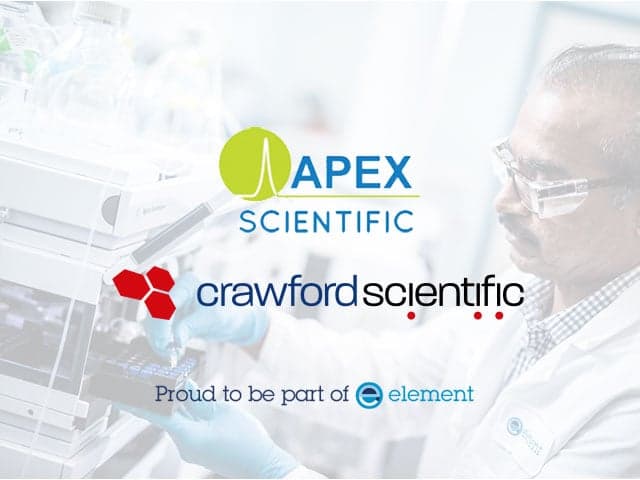
Chromatography Products and Training Solutions
Element Lab Solutions provides chromatography products, services and expert training to enhance lab efficiency and reduce analysis errors. Get tailored solutions for HPLC, GC, LC-MS, and more with Element's support.
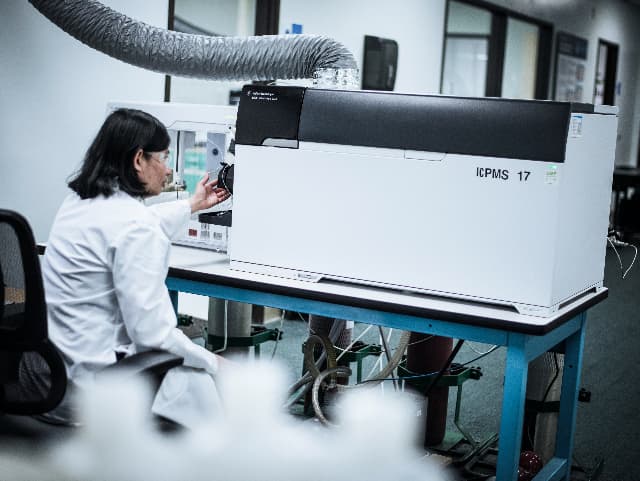
Trace Metal Testing and Analysis Services
Element offers trace metal testing and impurity analysis services, addressing safety, compliance, and contamination challenges for pharmaceutical products with advanced techniques and global expertise.

Elemental Impurities Testing and Analysis
Industry-leading elemental impurities testing for pharmaceuticals. Offering advanced methods, accurate trace detection, and regulatory expertise to support safe and compliant drug development processes.
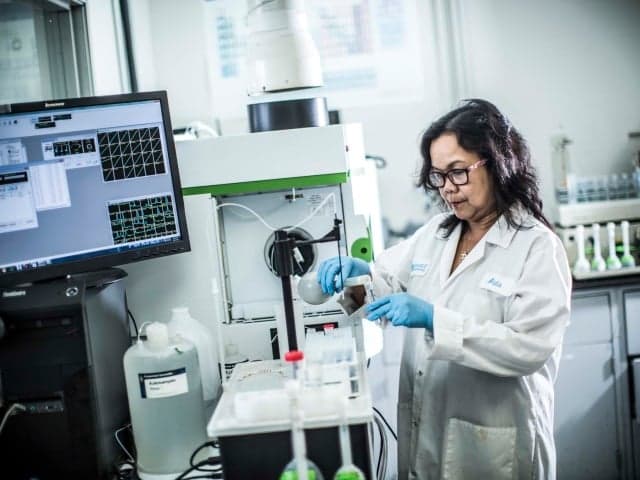
Chemical Analysis Services
Element’s chemical analysis services provide accurate material verification, compliance testing, and contamination detection. Our advanced methods deliver reliable insights for product development, quality control, and regulatory standards.
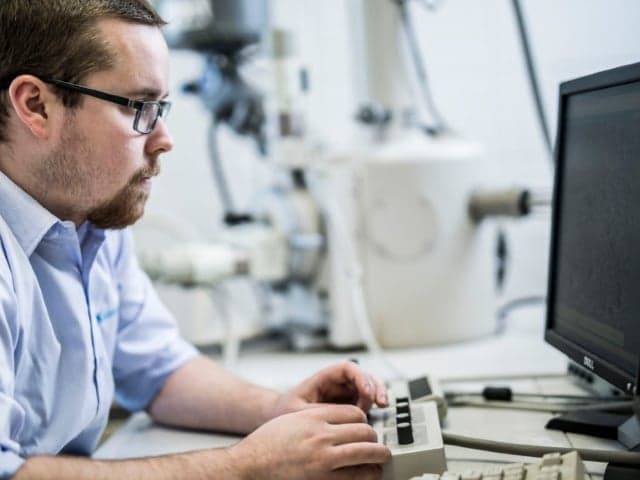
Scanning Electron Microscopy (SEM) with EDX Analysis
Scanning Electron Microscopy (SEM) and EDX analysis provide high-resolution imaging and elemental composition insights to detect surface defects, contaminants, and material properties, supporting manufacturers with detailed material evaluations.
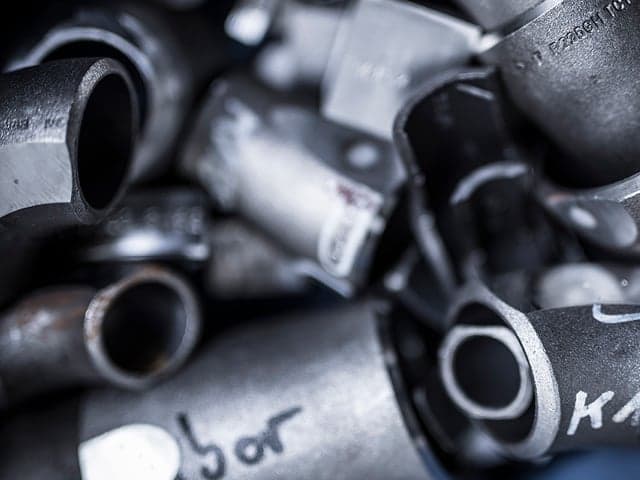
Positive Material Identification (PMI) Testing Services
Element's Positive Material Identification services provide a fast, cost-efficient method for determining the composition of metals and alloys, in the lab or in the field.

GC/MS Analysis Services
Element's GC/MS analysis offers tailored testing solutions with ISO 17025 accreditation, helping you achieve precise data insights and meet complex regulatory challenges.
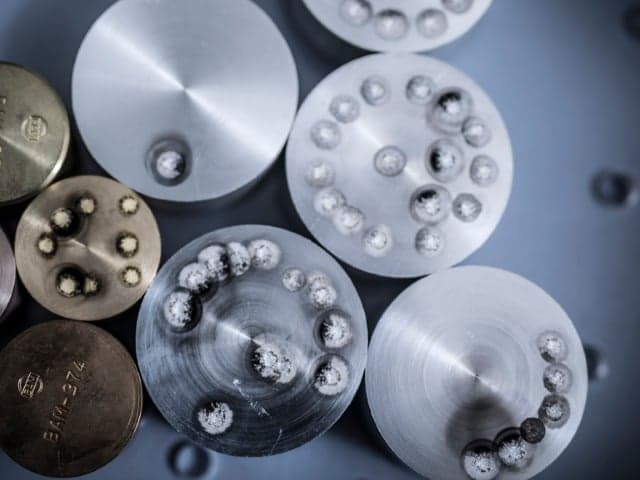
Optical Emission Spectroscopy (OES) Analysis
Element's Optical Emission Spectroscopy (OES) analysis delivers precise metal composition testing in-lab or on-site. Get fast, accurate results for alloy verification and quality control with expert support.

Atomic Absorption (AA) Spectroscopy Laboratories
Accredited labs providing atomic absorption spectroscopy for precise trace element analysis. Available globally with expert support tailored to your material testing needs.

X-Ray Fluorescence (XRF) Testing Services
Element provides X-Ray Fluorescence (XRF) testing, available on-site or in the lab, for quick and precise chemical composition analysis of solids, liquids, and powders.
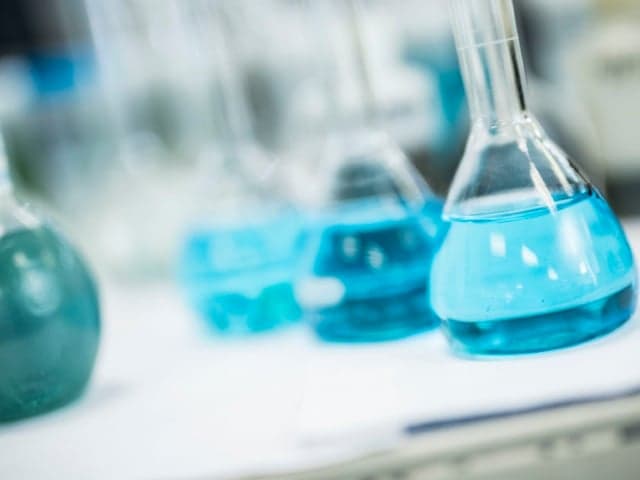
FTIR Analysis
FTIR analysis offers efficient chemical testing to identify unknown substances, polymers, and contaminants. Element provides expert insights and advanced techniques to address complex material challenges.
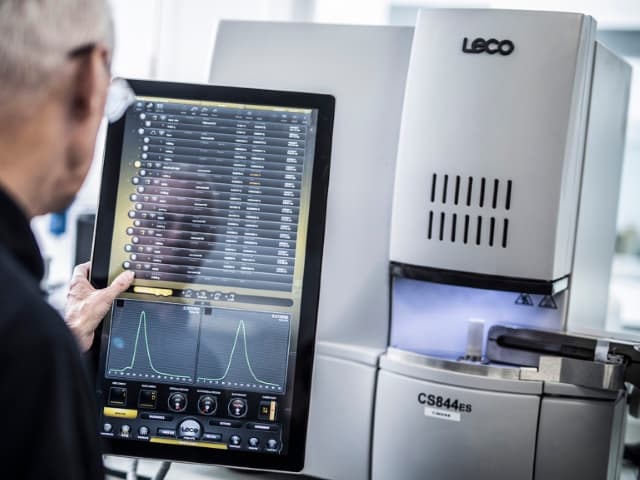
LECO Analysis
LECO analysis provides precise elemental testing for metals, detecting carbon, hydrogen, nitrogen, oxygen, and sulfur. Trusted by manufacturers to verify material composition and maintain quality across production stages.

RoHS Compliance Testing Services
Our experts offer Restriction of Hazardous Substances (RoHS) compliance testing for company dealing with electrical and electronic component equipment.
- Chromatography Products and Training Solutions
- Trace Metal Testing and Analysis Services
- Elemental Impurities Testing and Analysis
- Chemical Analysis Services
- Scanning Electron Microscopy (SEM) with EDX Analysis
- Positive Material Identification (PMI) Testing Services
- GC/MS Analysis Services
- Optical Emission Spectroscopy (OES) Analysis
- Atomic Absorption (AA) Spectroscopy Laboratories
- X-Ray Fluorescence (XRF) Testing Services
- FTIR Analysis
- LECO Analysis
- RoHS Compliance Testing Services

